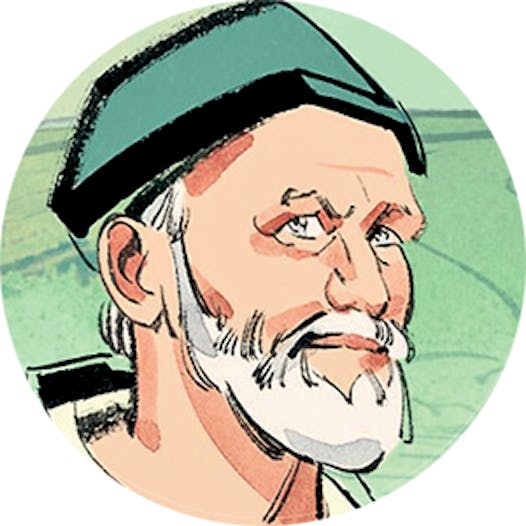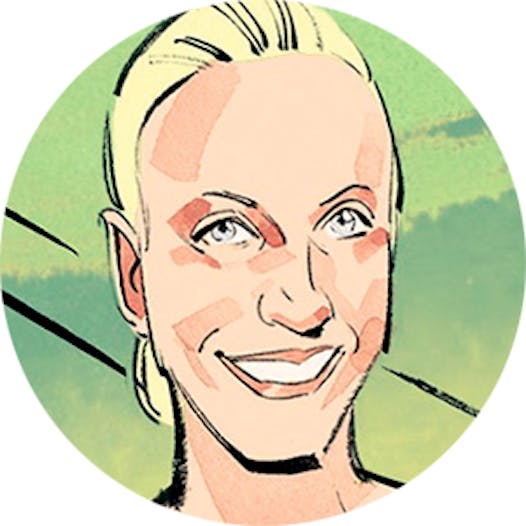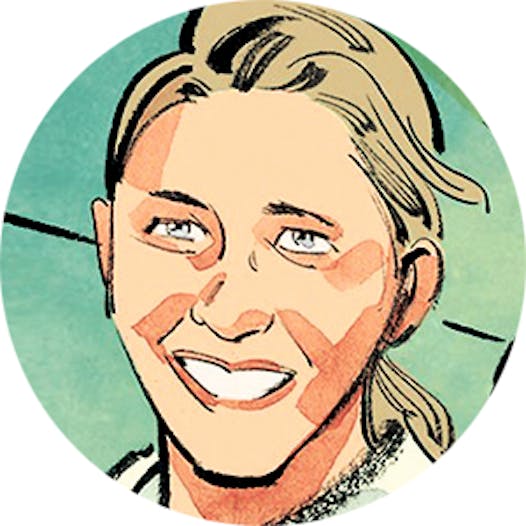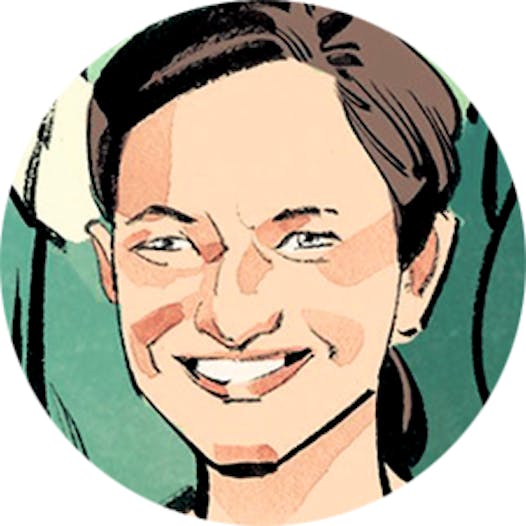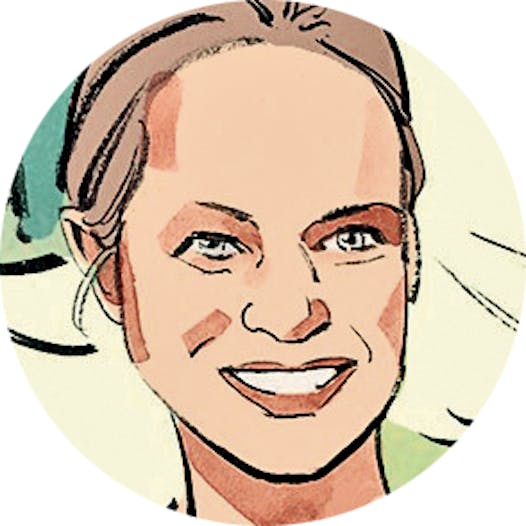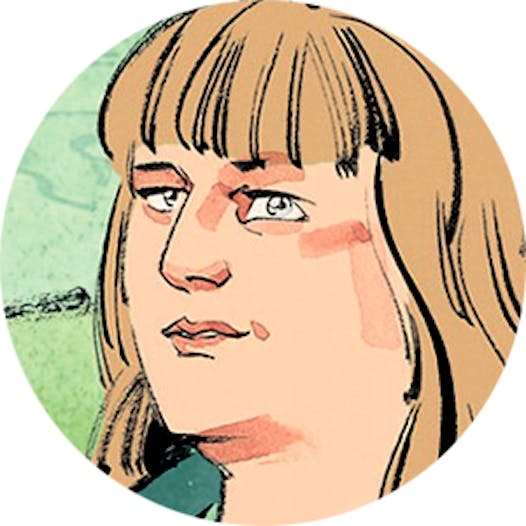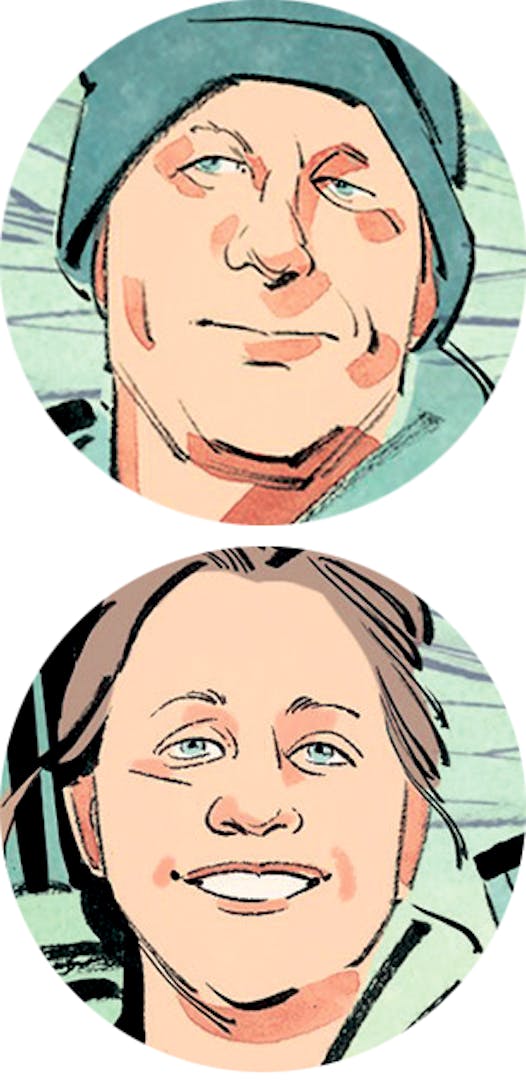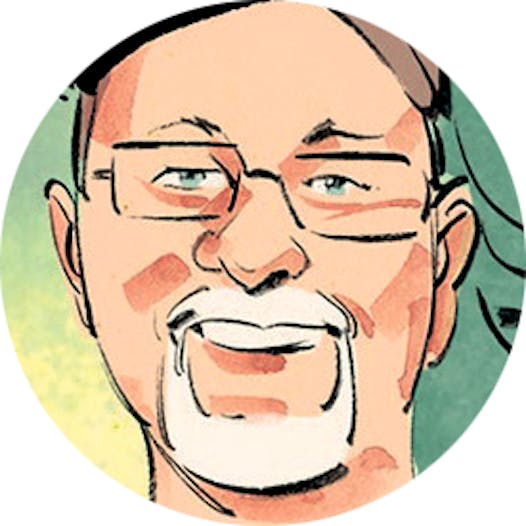A special kind of outdoors chemistry
Sean "Shug" Emery
A beloved State Fair performer for decades, Emery's alter ego is Shug, a winter camping YouTube star. His most popular video, about hammock camping in minus 40 degrees near Ely, has racked up over a half-million views.
"Since the article in January my quest has been to maintain my life in a way that gives me a grand balance. My recovery from rotator cuff surgery in September 2018 has been triumphant. Feel like it is 99.9 % back to normal. In my line of work that is paramount, as I live by the "No Work, No Pay" lifestyle.
Winter backpacking and using my hammock is ahead of me for 2020 and I hope to get in at least three trips. Usually up to the Boundary Waters Canoe Area Wilderness and Superior Hiking Trail. Winter camping just extends my backpacking season. I'm in it for the pure exhilaration that being out in subzero can bring to a human. And to film more trip videos to post on my YouTube channel. To which, I am still savoring being a YouTuber and hopefully helping folks out with their hammock quest.
Being 61 now, I appreciate every little thing even more. I am spending a bit more time trying to give back. I volunteer for Open Arms of Minnesota, a nonprofit that cooks and delivers free, nutritious meals to people living with life-threatening illnesses in the Twin Cities.
I am already booked back at the State Fair for 2020. This will be my 29th consecutive year there doing all 12 days. And it gives me a goal for the year with my (comedy-juggling) act."
Ladia Albertson-Junkans
Ultramarathoner, formerly of Stillwater and one of several former Minnesotans who are successful on the ultrarunning scene.
"A 2019 highlight was definitely running Western States (100-mile race). It was very much in honor of my dear friend Gabe (Grunewald, an inspiring former University of Minnesota running star who succumbed to cancer in June). Another highlight was setting the Timberline Trail (fastest known time) this fall with Gabe's husband, Justin, by my side and Abby Anderson, Gabe's sister, crewing us along the way. It was another way for us to honor Gabe and the way she lived her life while also raising money for the foundation (Brave Like Gabe).
Gabe's death has certainly been a sad and difficult part of this year. There have been equally as many beautiful moments, too.
What am I looking forward to next year? Spending time with loved ones on and off the trails. I haven't thought too much about races other than running at the Olympic marathon trials, which I qualified for in 2018. I don't have any goals other than to continue using my running to spread Gabe's message of hope and perseverance."
Courtney Dauwalter
Ultramarathoner, formerly of Hopkins, won the 106-mile Ultra-Trail du Mont-Blanc through the Alps of France, Italy and Switzerland. The race, best known as UTMB, is regarded as one of the most prestigious and challenging.
"Highlights of the year have been exploring new trails in some beautiful places. UTMB was a special race and getting to experience that course and race atmosphere was a real treat. Getting injured and not being able to finish Western States this year was not the plan, but I'm thankful for the lessons learned and the newfound respect I have for paying attention to the details, like hip strength and foam rolling.
In 2020, more trails, more miles, and pushing myself to see what's possible. I'm excited to race the Hardrock 100 in Colorado this summer and to have another chance at Big's Backyard Ultra in October."
Rachel Drake
Ultramarathoner, formerly of White Bear Lake.
"Highlights from 2019 include having a great day at CCC (part of the UTMB weekend of races) and placing seventh, cutting down 9 minutes on sixth place in the last 18 kilometers and finishing 2 minutes back. Other highlights:
• Representing the United States at the World Mountain Running Championships in Argentina and having my family there to watch.
• Circumnavigating Mount Rainier over three days.
• Getting married!
A lowlight was not having a great day and placing 28th at World Mountain Championships.
I am looking forward to running at the Olympic marathon trials in February with Ladia! The rest of the running plan is being worked out, but I have my eye on the Eiger 101-kilometer race in July and another UTMB race in August. Hopefully I will be defending my Ph.D. thesis in the fall of 2020!"
Brittany Peterson
Ultramarathoner, formerly of Carlton, Minn., took second place at the prestigious Western States 100.
"Finishing second place at Western was definitely a highlight of 2019. Another was hosting my first Technical Running Camp in my home training grounds in Idaho, alongside my partner, Cody Lind.
The CCC 100K ended up being a subpar day with a 19th-place finish. I walked it in and gutted out the finish. I was feeling great until I ran out of gels between aid stations, didn't eat enough at an early aid station, then didn't recognize this in time. I bonked hard. Ultimately I look back on it as an excellent growth experience.
In February I am going to Costa Rica and doing a six-day stage race, the Coastal Challenge. I also will return to the 2020 Western States 100. I could not pass up the opportunity to wear the "F2" bib. I plan on approaching this race just as I did last year, trying to not add any additional pressures to repeat my 2019 result. I also will return to UTMB weekend, either to seek revenge on CCC or to do the full UTMB 106-mile race."
Stephanie Howe Violett
Ultramarathoner, former Forest Lake standout.
"I finished fourth at CCC this past summer after having Achilles' tendon surgery in May. That was a pretty great surprise! A lowlight was the surgery and rehabbing most of the summer. I plan to race UTMB, and I'm excited about my fourth start there. I'm more excited about long adventures in the Alps with my friends, though. I love racing, but I love exploring more!"
Lori Schmidt
Schmidt is the curator of the International Wolf Center in Ely, Minn.
"This was a challenging year for Wolf Center health issues. We lost two wolves to cancer: Aiden died of cancer in August; Luna was euthanized in November. It reiterates how anyone who cares for animals must understand the big responsibility of animal health and welfare, and the difficult decisions to be made in the best interest of a particular animal. The staff was in a heightened level of observation and monitoring.
Pups will arrive in 2020, and we are thrilled to work with the Wildlife Science Center in Stacy, Minn., again as a pup source. We raise pups every four years. This is not something we plan based on mortality; it's already in the works. Luna was our last female, but was retired and moved out of the exhibit pack in 2016. So, our pack structure hasn't been as complete for three years. A dominant pair leading a pack is different from a dominant male leading the pack. A pair of wolves not only reinforces the pack socially, but provides the discipline and behaviors necessary to keep a pack cohesive. That's going to be forming again when the new pups arrive. People obviously think pups are cute, but the new pups also will influence the social dynamics of the group. Wolf Center visitors can watch that unfold as the pups grow from juveniles to yearlings to adults."
Justin Watkins
The author and natural resource professional from Rochester, Minn., travels the nation hunting big fish with flies, primarily out-of-the-mainstream "rough fish" species like longnose gar, carp, freshwater drum and others.
"The fishing season wasn't the best I've ever had, but it was one of the best with family and friends. We had great spring dry-fly fishing during caddis fly hatches on the trout streams near my home. June marked our 10th year of spending a week on Lake Michigan, wade-fishing with fly rods for giant carp. The water level has risen 50 inches since 2013, so we're always learning new water and adapting our approach. Some places we fished in the past are unfishable now.
After a traditional September BWCA family fishing trip was moved up to early August, it was back to the trout streams in early fall. We logged a number of 30-50 trout days doing nothing but searching with basic dry-fly patterns.
In 2020 the goal is to basically repeat 2019, seeing a lot of land and water, always studying and appreciating what nature has to offer. I'd like to continue writing both fiction and nonfiction, maybe getting into some of the interesting details regarding Lake Michigan — a very intriguing and special place."
Michelle Carstensen
The supervisor of the Minnesota Department of Natural Resources wildlife health program says grouse and deer have been on the front burner since she was featured in a story in October.
"In November we confirmed the presence of Eastern equine encephalitis in three ruffed grouse shot in Itasca County. The hunters noticed their birds were either undersized with reduced muscle mass or unable to fly or flee. It was cool to confirm because even though we have known this mosquito-spread disease is here — our moose and wolves have antibodies to it — this marked the first time we documented actual cases.
Chronic wasting disease (CWD) in deer continues to dominate my work. We have collected more than 16,000 lymph node samples from deer since the archery, firearms and muzzleloader seasons began. We continue to find CWD in the southeast but did not find any new cases in the north-central zone — centered around Crow Wing County — or the central zone, where CWD was discovered three years ago at a Meeker County game farm. Precautionary testing in the central zone will end. Unfortunately, we will be looking at increased surveillance work elsewhere as a CWD-positive game farm was recently detected in Douglas County.
Finally, we launched a project to assess potential exposure of deer to neonicotinoid pesticides, which are insecticides applied through agricultural seed treatments and other means. We are doing this because a recent South Dakota study found that deer exposed to high levels of neonicotinoids in a controlled setting showed behavioral changes and reduced fawn survival. Citizen assistance for this project has been tremendous. Hunters have sent us more than 700 deer spleens to study."
Jenny Anderson
The outdoorswoman and blogger behind Girlof10000lakes.com.
"In 2019, one cliché has definitely been proven true: Time flies when you become a parent. I became a first-time mom in May. Each day leading up to Harlan's birth and after has been an adventure. One of my favorite memories from 2019 is when I did a back-to-back ice fishing trip to Lake of the Woods followed by the Gunflint Trail. I was 7 months pregnant and getting anxious for baby's arrival. The first couple months of Harlan's life can be summed up with sleepless nights, not feeling like myself, Google-searching things like "how to sleep train your baby," and reading mom blogs to make sure I'm doing all the right things. When Harlan was 2 weeks old, my husband, Nick, and I got a case of major cabin fever. We packed all of the baby gear we could fit into our SUV and went north to the family cabin. I caught a bass and walleye off the dock while Harlan slept next to me in his car seat. That was pure bliss. Since then, our family of three plus our dog, Kiwi, fished on Lake Superior where I caught my personal best lake trout, camped at some of our favorite state parks, and took a memorable blog-related BWCA trip. In 2020, I want to continue introducing Harlan to the great outdoors. He'll be ice fishing with mom and dad as soon as there is a good amount of ice. I also want to pursue more projects for my social media channel and blog, working with organizations and brands that I love, and hopefully continuing to inspire people to get out, even with a new baby in the picture."
Mark and Katya Gordon
The North Shore couple led winter exploration of frozen river gorges through their work as instructors with North House Folk School in Grand Marais. They also run a charter sailing business, Amicus Adventure Sailing.
"The snowshoeing season up North Shore river gorges ended almost exactly when the story on our winter river explorations appeared. Spring along the North Shore is so frigid that staying ashore doesn't really help keep us warm. If you're going to be chilly, you might as well be chilly on the lake.
Starting May 3, we set sail on our busiest sail-tripping season ever, with 11 multiday trips into September. We took hundreds of people on two-hour day sails out of Knife River. Trips ranged from glassy seas, 75-degree water temperatures and jumping off the bow to bone-chilling northeast breezes that some participants yearned for regardless. We sailed the Canadian northern shoreline twice, around Isle Royale and along the North Shore three times each, and spent many nights in the Apostle Islands aboard our 40-foot steel sailboat, Amicus II.
If anecdotal evidence by Lake Superior mariners and captains can be trusted, the lake is definitely seeing what scientists have long predicted — more extreme and unpredictable weather. The Apostle Islands, which despite the sense of protection one can mistakenly feel in sheltered waters, seemed to attract the worst storms. Mark and his passengers were often forced to scoot back to marinas for the night, shorten sailing days or simply stay put.
We hope for a serious cold snap before too much snow insulates the ground and ice cover, ensuring good ice for this season's winter river exploration. We continue to lead trips. But every year we're reminded of the climate crisis that immerses us. We adjust plans accordingly."
Jim Sable
Sable founded the Minnesota High School Clay Target League, which during his nearly 20-year tenure grew to 349 teams comprised of nearly 12,000 student athletes. The 81-year-old visionary retired last winter.
"The good news is I still haven't found time to build a birdhouse in retirement. I retired from my first job in my 60s and retired from the clay target league last winter but have yet to slow down. I am still going to meetings, answering phone calls and trying to expand trapshooting opportunities for Minnesota youth, especially those who live in the heart of the Twin Cities where opportunities are hard to come by.
Surprisingly, I still get speaking engagement requests. People still want to hear the story about how a simple act of mentoring one Minnesota girl in trapshooting grew into a national organization — the USA Clay Target League — that oversees some 30,000 student trapshooters in 30-plus states. I had one of these athletes — a college pre-med student named Kalley Johnson — join me at a recent speaking engagement. In fact, Kalley gave the talk. It was excellent because she explained how the league teaches kids so much more than just how to break targets.
Time magazine did a piece on this year's Minnesota state championship at Alexandria, which is the largest trapshooting event in the world. The national media attention was very gratifying. These are opportunities to explain how the league's success is rooted in teams of girls and boys, including adaptive students, who participate together. Participants need not be big, strong, fast or agile to become good trapshooters.
Dianne Seger
This year, retirement gave the Plymouth, Minn., woman the opportunity to realize a dream: thru-hiking the 2,200-mile Appalachian Trail (AT). She hit the trail Feb. 21 in Georgia and completed her trek Oct. 5 by summiting Mount Katahdin in Maine.
"Thru-hiking the AT was a wonderful experience for me: physically, mentally and spiritually. In fact, I've had a difficult time readjusting to society. Post-trail depression is common, if for no other reason than the endorphin crash that happens when you are no longer walking in the fresh air for 6-10 hours per day. Trips to the gym can't replicate that, and the relationships formed with others in the hiking community will last a lifetime. I miss the trail every day.
I expect to do multiple BWCA trips this summer, and some hiking and backpacking, including at least one winter camping trip (the 'Frozen Butt Hang,' involving hammock hangers camping out in January). I also plan to participate as a dog handler for a musher in the John Beargrease sled dog race. I'll be doing some consulting part time and probably plan another long-distance hike to be done in a year or two, assuming I stay healthy."
Bill Gombold
A waterfowl decoy painter and restorer from northern Itasca County.
"Boy, was I surprised. I got phone calls, e-mails and letters from duck hunters living in California to Chesapeake Bay after that story. Their interest was gratifying because I've never considered what I do or who I am all that interesting. Most of those who tracked me down wanted to know about my techniques. I spent a fair amount of time this fall offering advice on paint colors, paint types, and how to restle-coat a decoy. I also ended up with a bunch of unexpected business.
The highlight of my fall was reconnecting with hunter 'Bobcat Bill' of Effie, Minn., who I met many years ago. Really nice guy. He hadn't hunted ducks in decades but decided to join me this fall. Well, we had a ball even though the shooting wasn't so good. He's going to hunt again next fall. Isn't that great? I sure think it is.
Since November I have been refurbishing my own decoys, working on orders, building new decoys with my Herter's 72 mold, feeding the birds, and enjoying life. Anyone can reach me at ringbillhunter9@gmail.com."
Ben Pena
A captain in the Minneapolis Fire Department, Pena is known around the Minnesota outdoors community as an uber-mentor, regularly giving up his own hunting and fishing opportunities to teach others.
"[Dec. 15] was the last day of the Minnesota muzzleloader season and I'm sad to see the end on the horizon. But this means it's time to finish things that started months ago. Like hosting a certified mentor training with a packed house of eager, well-seasoned hunters looking to help lead the way. Or making sausage and cured hams out of the deer that were harvested by many new hunters this fall. I'm lucky to be able to help many new hunters get out in a safe and ethical manner. This year I helped with getting out 10 new hunters and more than 13 returning hunters with mentors to hunt whitetails in the 'Adult Learn to Deer Hunt' program, which takes them through hunter education, field days and multiple range sessions, and a hunt weekend. This was our sixth year — our most successful and challenging. Hunters harvested nine deer and most processed the animals themselves or did it with their mentors. I'm a little sad I did not get out with my muzzleloader, but I get many opportunities to get out while helping others learn. I can't claim to do it myself — this is a partnership with many great people and organizations like the DNR, the Minnesota chapter of Backcountry Hunters and Anglers, Modern Carnivore and many more."
Stories compiled for the Star Tribune by C.B. Bylander, Frank Bures, Tony Jones, Tori J. McCormick, Jeff Moravec, Scott Stowell and Bob Timmons
